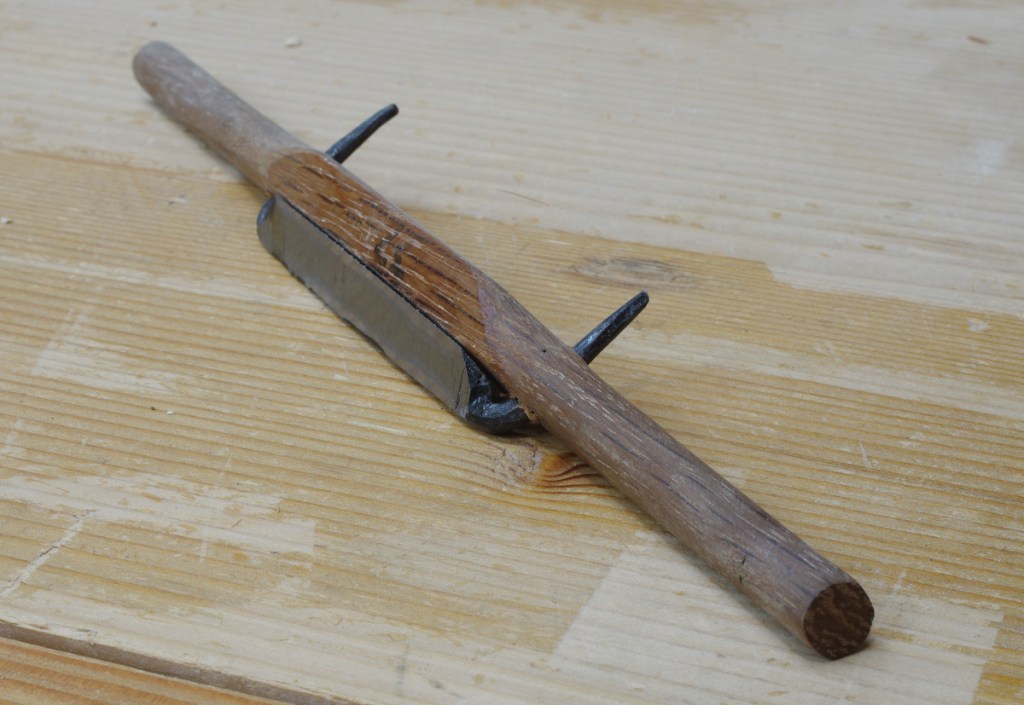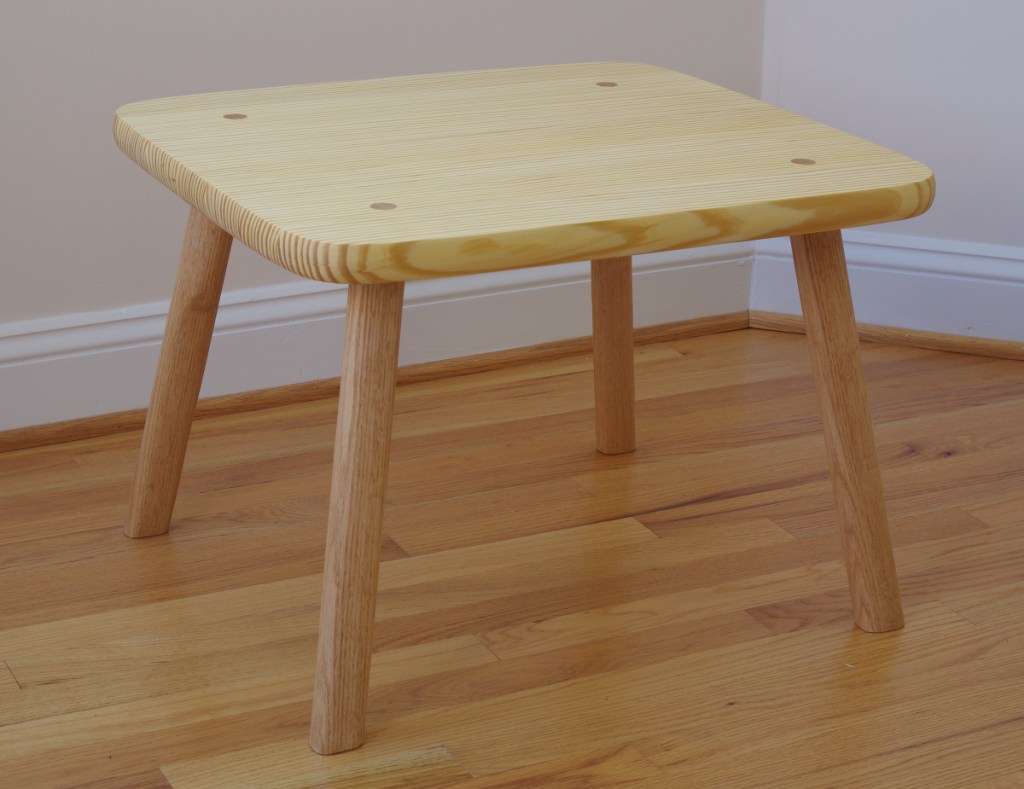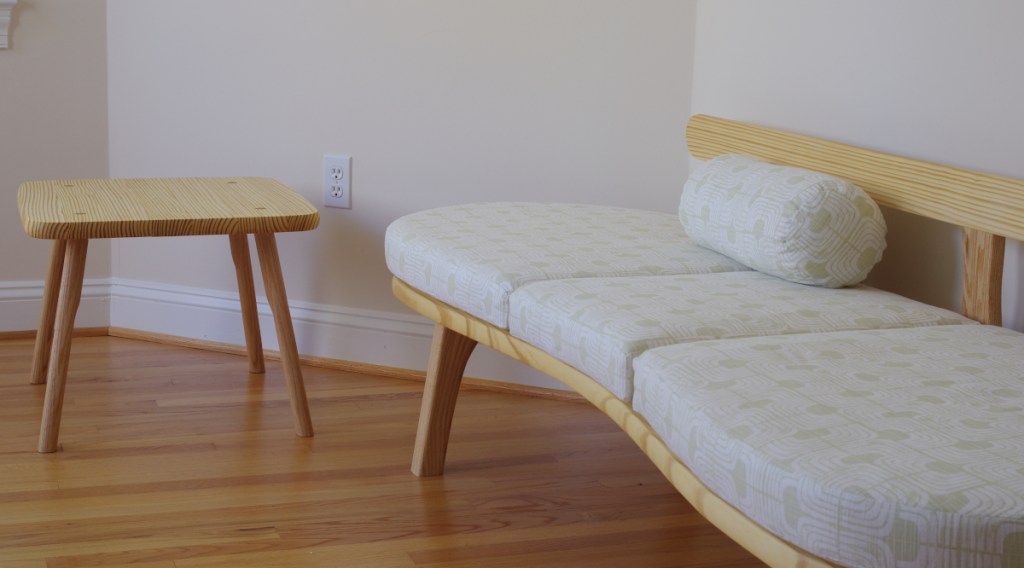After a while working on the bench-on-bench, I decided to make a fairly brief video describing my experience with it. I did this because although there are a lot of videos that show building one of these things, there aren’t many that say what they’re good for. I also wanted to highlight a few things about my design that I’ve found helpful.
Monthly Archives: November 2021
Accompanying Side Table: Finished
I finally found the time and motivation to perform the final steps on the side table:
- Smooth and sand the legs
- Plane and sand the top
- Make the wedges
- Kerf the tenons, glue tenons into mortises, bang wedges home
- Trim tenons
- Trim/level legs
- Apply the finish
There’s nothing too complicated about any of this. The only noteworthy thing is that for the legs, I used my Taiwanese spokeshave to smooth out the legs instead of really coarse sandpaper:

I’m not a big spokeshave user, and I finally realized why I hadn’t really used this one yet: I hadn’t sharpened it. I’d been putting this off because I suspected that it would be difficult, but with the new sharpening station, I figured I’d give it a shot. It turned out to be a little tricky until I got the hang of it. The cutting edge of this shave is similar to what you’d find on a Japanese chisel–a very hard piece of steel (likely Japanese) forge-welded to a softer backing/body. The face has a hollow, making it easy to smooth, but the bevel is rough because there’s such a difference in hardness between the cutting edge and the rest.
Because you don’t have much leverage when sharpening, it’s too easy just to end up mostly rubbing the soft part on the stone, instead of honing the cutting edge. I finally figured out that if you push on the tangs when sharpening, it’s a lot more effective.
In any case, with everything assembled, the table looks like, well, a table:

Last time, I mentioned that I’d cut the first leg incorrectly, 90 degrees to what I wanted. But it turns out that the first one was actually “correct,” and I messed up the other four. The growth rings of the oak are oriented 90 degrees to the yellow pine, and they’re supposed to be parallel. For this application (not being a chair), I don’t think it’s going to matter, though that’s still a little bit annoying. I got the wedges in the correct orientation, which is a lot more important.
So here’s the table next to the daybed:

This might not be the final arrangement, but the two pieces are meant to go together. The legs and tops are meant to complement each other. The table’s top is in the profile of the daybed legs, and the table’s legs have a more oval profile, like the platform and rear support of the daybed. Both sets of legs have a sort of single-step taper.
The table might need another application of finish (tung oil/varnish blend), but I’ll make that call later.
